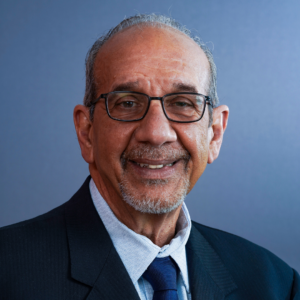High-tech pressure ulcer reduction
First, do no harm. —Hippocratic Oath
If we can reduce the cost and improve the quality of medical technology through advances in nanotechnology, we can more widely address the medical conditions that are prevalent and reduce the level of human suffering. —Ralph Merkle, nanotechnology scientist
American medicine lives between these two positions, with a strong tendency to stay closer to the former. This may be because of history, infrastructure, litigation concerns or a variety of other factors. However, our own history has shown that the conservative approach does not always accrue to the benefit of the patient.
At a time when antisepsis was the standard of practice throughout Europe, it was frowned upon within the United States, and as a result, the physicians treating President Garfield were directly responsible for his death. I have been first-hand witness to this during my decades of interaction in the arena of pressure management, whether in rehabilitation or long-term care delivery space.
The recognition of decubitus ulcers, pressure sores, or pressure ulcers is not a new problem. Florence Nightingale in 1859 wrote, “If he has a bedsore, it’s generally not the fault of the disease, but of the nursing.” While she may have been naïve in delivering all of the responsibility to nursing, the point is well taken.
Despite advances in medical knowledge and technology the problem is getting worse. [Pressure ulcers] resulted in 29,000 deaths in 2013 up from 14,000 deaths in 1990, according to a December 2014 article published in The Lancet that examined rates from 1990-2013.
The science tells us that that after 15 minutes of excessive pressure (> than 40mm Hg) there is cell damage, and after 1 hour a cascade of effects can lead to significant tissue damage. Our daily experience tells us that moving patients on a regular and timely basis, despite our best-intentioned Standard Operating Procedures (SOP) often become a Herculean undertaking.
An unintended consequence of this need to weight shift is that many patients are left in bed because of the added labor and time in getting them up in a chair where weight shifting becomes even more of a challenge. I say “consequence” because we are also aware that the upright position, while posing additional pressure issues in the sacral/coccygeal area, has benefits in cognition, social interaction, eating and digestion and breathing.
Our approach has been to re-imagine the good old geri-chair as a “platform” and enhance it with power and intelligence. I say platform because our approach (Robotic Programmable Automatic Weight Shifting) can be interfaced with virtually any of the chairs currently in use in the long-term care setting.
By adding power actuators we reduce the stress on the staff (think “safe handling”). By adding a programmable module we can set virtually all of the parameters (frequency, degree of shift, rate of shift, angle of back shift, angle of front shift) needed to handle any weight-shifting protocol the clinical setting requires.
We also significantly reduce staffing time in having to maintain a weight shift schedule, because we fully understand that in the clinical setting, as in most of life, urgency typically trumps necessity.
We also have addressed safety and documentation. Sensors, individualized for each platform, monitor for potential obstructions and prohibit accidental contact or impingement and the electronic brain captures all weight-shifting activity downloadable for documentation.
A possible advantage to early adopters of this kind of approach is that increased efficiency and productivity can allow a facility to accept more complex patients who may be billable at a higher daily rate, positively impacting the facility’s revenues.
We don’t think for a second that this begins to approach the technological breakthroughs we will see in the coming decades, but we do believe for institutions looking for a technological approach to dealing with pressure management issues, this is a reasonable and incremental approach.
Christopher Barnum, PhD, is CEO of Gel Ovations, Commerce City, Colo. He was a researcher for 25 years and has spent the 20 years utilizing similar approaches in the development of static and dynamic solutions for pressure management.
Related Articles
Topics: Articles , Clinical











